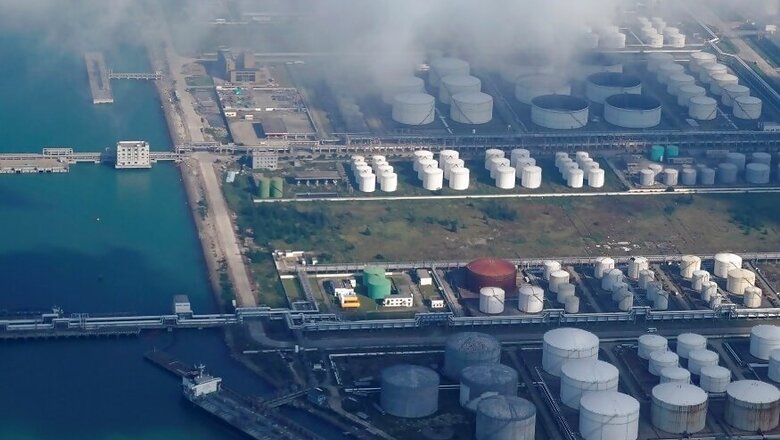
views
Singapore/Shanghai: Chinese financial investors betting on a rebound in oil prices are filling commercial storage tanks held by the Shanghai futures exchange just as fast as the exchange can find them.
Despite a more than doubling of storage capacity over the past six weeks to 57 million barrels, with tanks sourced from state and private refiners, nearly all existing storage is set to be filled by end-June, two industry sources with knowledge of deliveries said.
The flood of purchases has come from companies little-known to the oil industry which have been bidding up Shanghai futures, China's only oil futures contract, since early April when global oil prices slumped as COVID-19 hammered demand.
"We call them 'hermit' investors," said a state oil official whose firm recently delivered cargoes into the contract. "They are hedge funds backed by rich individuals, trading affiliates of brokerages."
The buying pushed Shanghai crude futures prices above global benchmark Brent, encouraging state companies like Sinopec , PetroChina and Zhenhua Oil to deliver Middle East crude into the contract, the sources said.
Between late April and the end of June, some 50 million barrels of oil valued at roughly $1.8 billion -- equivalent to five days of China's total purchases -- are expected to be pumped into a dozen delivery points managed by International Energy Exchange (INE), the sources said. Most of the oil is Iraq's Basra Light and Oman crude, they said.
"With deliveries started in late April and based on our tracking, the 50 million barrels' space will be more or less filled towards the end of June, taking in mostly April and May loading cargoes," said the second state oil official.
INE did not respond to a request for comment. The Shanghai Futures Exchange, which owns the INE, declined to comment on storage or buyers, saying: "This involves trade secrets of the participants, and is not public information."
Chinese oil stockpiling is normally driven by state giants which sweep up cargoes to fill the government's strategic petroleum reserves or commercial reserves held by refiners.
However, in the current downturn, stockpiling has been driven by financial investors who believe oil is set to bounce strongly off its lows, said the second official.
The sources declined to be named as they are not authorized to speak to media.
RECORD IMPORTS
Along with increased purchases by Chinese refiners, the stockpiling has boosted China's crude imports this month to a record 55 million tonnes, or 13 million barrels per day (bpd), according to an assessment of ship tracking data from Refinitiv's oil flow forecasts. This is up from an average 10.1 million bpd of imports in 2019.
Some analysts say a small amount of oil may be going into China's Strategic Petroleum Reserve (SPR), but others like Refinitiv senior analyst Emma Li say government tanks were filled in late 2019, with no new tank space available.
The speed of investor stockpiling -- at 50 million barrels in just over two months, or 700,000-800,000 barrels per day -- is faster than in previous buying bouts in 2018 and 2019 led by state firms, said analysts and the first state oil trader.
Investment interest has been supported by the INE's relatively cheap storage costs, which make it easier to make a profit from holding crude, although the exchange plans to double its storage costs in June.
The exchange has boosted warehouse space to 57 million barrels by adding tanks from Sinopec, PetroChina and private refiner Shandong Hongrun Group, the sources said. It may also start allowing deliveries into ships.
By comparison, Cushing, Oklahoma, the delivery point for U.S. oil has combined space of about 76 million barrels.
Financial investors are expected to hold the oil as long as prices stay higher in forward months - a market structure known as "contango" - and the inter-month spread is wide enough to cover storage charges and financial costs, said trading and broker sources.



















Comments
0 comment